September 16th, 2008
Famous Kirkbride Building Residents

Rummaging around online as I do all too often, I’ve come across a few famous names in connection with different Kirkbride hospitals—as patients I mean. I thought it would be interesting to start a list of them. Not only will it shed a little light on their personal stories, but it also shows mental illness doesn’t necessarily prevent one from being brilliant and/or functional. It also helps humanize the mostly anonymous group often referred to simply as “patients”.
Woody Guthrie – Greystone Park State Hospital
On May 28, 1956, Morristown police discovered legendary singer-songwriter Woody Guthrie wandering aimlessly in a daze. After a night in jail, Guthrie was sent to Greystone Park State Hospital and would eventually be diagnosed with Huntington’s Disease—an incurable illness characterized by involuntary movements and a deterioration of mental faculties. For about five years, Guthrie lived at Greystone where Pete Seeger and a very young Bob Dylan were among his many visitors. With some humor, Guthrie referred to the hospital as “Gravestone” and the ward he stayed on as “Wardy Forty” (it being, of course, Ward 40). In 1961, he was transferred to Brooklyn State Hospital, and then to Creedmore Psychiatric Center in Queens, NY five years later. Guthrie remained at Creedmore until his untimely death in 1967.
Ezra Pound – Saint Elizabeths
The influential twentieth century poet Ezra Pound was essentially incarcerated at Saint Elizabeths after being charged with treason. During World War II, Pound lived as an expatriate in Italy where his enthusiastic support of Fascism and involvement in Italian politics led to his arrest when he fell into the hands of partisans toward the end of the war. The poet was shipped back to the United States in 1945 and declared unfit for trial due to insanity. It’s widely believed that Pound’s mental illness was greatly exaggerated, by both himself and the psychiatrist who evaluated him, in order to avoid a possible execution. Pound remained at Saint Elizabeths for several years where he continued writing and enjoyed special privileges in spite of his confinement. In 1958 he was discharged after influential friends and admirers successfully petitioned for his release. Pound moved back to Italy soon after and spent the rest of his life there. Poet Charles Olson wrote a book about his numerous visits to Pound during his hospitalization entitled An Encounter at St. Elizabeths.
Dr. Emmanuel H. Bronner – Elgin State Hospital
Soap mogul, evangelist, and obsessive rhymer Dr. Emmanuel Bronner (the man behind Dr. Bronner’s Magic Soap) was sent to Elgin State Hospital in 1947 for “vehemently espousing his views.” This was soon after he was arrested at the University of Chicago for speaking without a permit. Evidently questions were raised regarding his mental stability. Bronner was given electroshock treatment at Elgin and escaped on three separate occasions, finally fleeing to California where he felt he fit in better. You can see the trailer—which features photos of the Elgin Kirkbride—for a film about the doctor here: Dr. Bronner’s Magic Soapbox. One of the best ways to get a sense of his personality though is to buy some of his soap
and read the packaging. It’s plastered with his beliefs which do come across as slightly irrational, although they’re essentially altruistic and espouse world peace and associated worthy causes.
Daniel Johnston – Weston State Hospital
Eccentric songwriter and artist Daniel Johnston was sent to Weston State Hospital for a time in the 1990s. Diagnosed with bipolar disorder and autism, Johnston was hospitalized at Weston after a particularly disastrous episode in which he believed an elderly woman to be possessed by demons. The terrified lady jumped out a window to escape the manic Johnston, breaking both her ankles in the process. In spite of his problems and unsettling behavior, Johnston has a cult following of devoted fans and his songs have been covered by Tom Waits, Beck, The Dead Milkmen, Pearl Jam and several other artists. His troubled life and music are documented in The Devil and Daniel Johnston which includes some beautiful footage of Weston State Hospital.
While I’m not 100% sure each of these four men lived inside the Kirkbride building at each respective hospital, I have reason to believe it’s very likely. If you know otherwise or if you’re aware of other famous patients of Kirkbride hospitals, please comment and let us know. I’ve heard that poet Sylvia Plath may have been hospitalized at Northampton State Hospital, but I haven’t found any real evidence of that yet. It seems like it might be sort of an urban legend springing from the fact that she went to Smith College (which is right next to NSH) and also spent time at McLean Hospital.
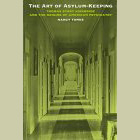
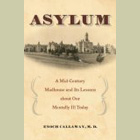
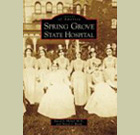





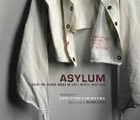
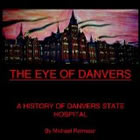

This is a pretty cool idea. I’ll see if I can dig up anyone of note. What criteria are you looking at regarding the length of one’s stay? I know the owner of Weston is claiming Charles Manson as a former patient, but I think he was there only briefly.
Thanks. You know I didn’t really even consider the length of stay as a factor, although I think that’s a good idea. Two of the above individuals were definitely hospitalized for an extended period of time. Guthrie and Pound stayed at Greystone and St Elizabeths respectively for many years. For Bronner and Johnston I believe their stays were at least a few weeks, if not months.
The main benchmark I used was that their stay was reasonably well-documented and mentioned frequently in their biographies. Something like that Manson story I can’t really accept until I see more proof. There’s only one source for that as far as I know, but that’s not to say it’s not true.
Though it is possible that Plath spent time in NSH it is unlikely. She was a student and teacher during the height of the hospital’s population, and as someone with the stature that Smith brings to the table… especially a writer, it is unlikely that NSH would have allowed her in.
Crazier things have happened though.
However, Smith and Northampton would never let you think it was a mere rumor if such a thing were true.
Heh. I’d say it’s just a rumor then.
Sylvia Plath spent time at McLean Hospital sometime before 1956. Try searching things on Wikipedia.com. It has a lot of useful information about things like that as well as some pictures. I searched her name on Wikipedia and it only said she stayed at McLean.
Gents,
This artical may interest you. it is from casebook: Jack the Ripper.
The only known source of information on the “Fogelma” suspect is a single article published in the Empire News of 23 October 1923. The article weaves an elaborate story around a Norweigan sailor, originally from Arendal, who was committed to a lunatic asylum in Morris Plains, New Jersey, in 1899. He was subject to fits of insanity. According to a source at the asylum Fogelma “muttered of scenes and incidents that connected him clearly with the atrocious crimes of 1888.” The patient’s sister, Helen Fogelma, had also found press clippings in her brother’s trunk, all describing the Whitechapel murders. Both Scotland Yard and the local New York City police were alerted, but according to the article the issue was allowed to lapse. Fogelma died at the asylum in 1902.
I am utterly fascinated with your site, the information and photography are breathtaking.
thank you.
Lola
was interested to see that you have a listing of well-known people who had spent time at mental hospitals. I was born at Greystone Park, NJ, where my father, Archie Crandell, was a psychiatrist and later became the Medical Superintendant. I recall that as a child, (circa 1940) the famous illustrator, Mahlon Blaine, was at Greystone as a patient and painted a portrait of my sister and me. He also did at least one landscape of the Nunn’s farm at that time. My father was the medical superintendant at the time of Woody Guthrie’s hospitalization, as well.
My grand mother was in greystone in the 30’s I am trying to find any of her records of her being there. Any ideas that can help me on my search?
I am interested in any information on patients and/or their family members that have a connections with Weston State Hospital
I recently learned that my great grandfather was a patient at the Northern Hospital for the Insane, and that he died at that institution March 118, 1896. A newspaper article reports he was a patient there for “several years.” Do you know how one goes about finding out when an individual was a patient at this institution? I would appreciate any leads you can provide. Thanks!
There is something completely WRONG with glorifying mental illness because so many so-called “brilliant” artisans have suffered because of their own self-absorbed egos. Just because someone thinks in a “different” way or a “visionary” way, does not exclude them from being what most people would call ordinary. After a while, creative personalities and the narcisstic tantrums they live and make art for become incredibly boring. If you break fundamental humanitarian laws and threaten yourself or others for a “cause” or for some kind of civil disobedience (or for whatever selfish or deluded reasons one can justify) you may be remembered for simply being brilliant or, sadly, just completely crazy. In American society, I believe, the actions and words we choose to use can easily classify us and label us, if the actions and words we use are too different. Anyone who regards themselves with any sort of self-esteem or wants to preserve the ability to THINK would be smart to avoid the insane, or glorify their madness.
N.R. said : “Anyone who regards themselves with any sort of self-esteem or wants to preserve the ability to THINK would be smart to avoid the insane, or glorify their madness”.
————————————-
Really now? How marvelously fortunate you must be to obviously come from such genetic perfection that you can write off an entire faction of the human race who never ASKED OR WANTED to be cursed with the sad fact that they are mentally ill. Also I doubt strongly someone who thinks like you, N.R.,would ever have the talent or ability to create anything remotely unique or incredible the way many of those tortured souls did. What a boring tedious world we would live in if everyone thought like you. All true genuis has a touch of madness. You can go put your head back in your cardboard box now.
I know of a few. I will have to check my records. (I am an asylum data collector.) Off the top of my head, I know that James Taylor was hospitalized at McLean.
My great-grandmother Edna Hanson died because of a lobotomy in Elgin State Hospital in the 30’s. The building’s gone and my mother told me all the records that were kept in the Kirkbride basement were destroyed by flooding. I wish I knew why she was there or where she is buried. Since her daughter, my grandmother, is schizophrenic I can’t seem to get any info from her. Are there death records somewhere? Treatment and diagnosis records? Strange to think that in a different time all but 1 of her grandchildren and great-grandchildren could have shared her fate. BTW The last son of John Smith, the founder of Mormonism, was institutionalized there in the last 1800’s.
I just read somewhere, that Rosa Ponselle, the opera singer, was at Mt Hope Retreat (later the Seton Institute) in Baltimore Maryland. I have been trying to find photos of that psychiatric hospital that was run by the Sisters of Charity. It was built in 1859 and operated until 1973. The city bought it and demolished the all of the buildings. I believe it was a Kirkbride, from the descriptions and a few photos. I lived near there and used to bicycle through the grounds in the summer. It was a very imposing place. I also read that some priests who had abused their young acolytes, were sent to Seton to “cure” them. Any body with any info about Mt. Hope/Seton would be welcome.
Susan, see the post at the URL below for a picture and some information on Mt Hope. (The institution did have a Kirkbride.)
http://www.kirkbridebuildings.com/blog/the-lost-kirkbrides-mount-hope-retreat